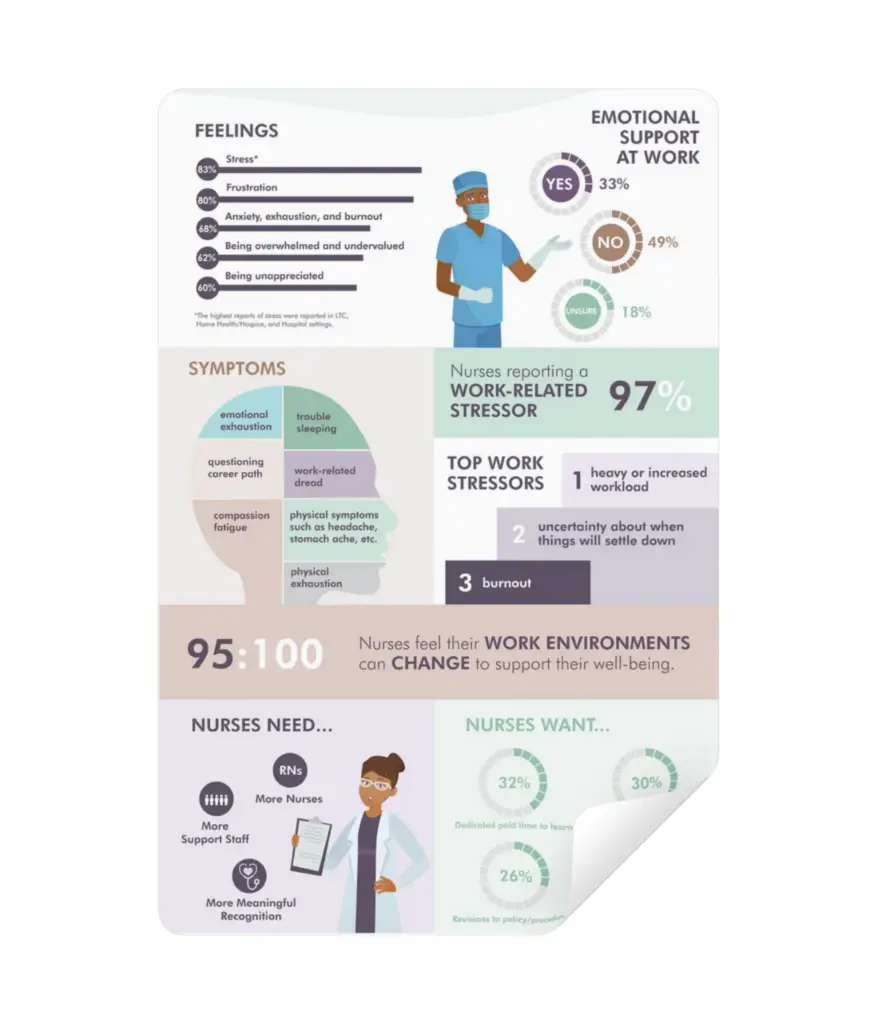Understanding Removable Stressors
Some workplace stress is preventable. Communication gaps, lack of role clarity, broken processes, or lack of time for breaks—these aren’t just part of the job. They’re examples of removable stressors: workplace conditions that can and should be improved.
This page helps you identify them and start thinking about what you can change—individually, in teams, and at the organizational level.
Examples of Removable Stressors:
- Inefficient workflows (duplicate documentation, unnecessary approvals)
- Unclear communication (mixed messages, last-minute changes)
- Scheduling challenges (inflexible shifts, chronic short-staffing)
- Technology frustrations (too many logins, slow systems)
- Unnecessary administrative burdens (tasks that don’t add value)
- Lack of inclusion in decision-making (staff left out of process changes)
- Workplace culture barriers (norms that prevent breaks, unrealistic expectations)
Not Removable (But Manageable) Stressors:
- The emotional toll of patient care
- High-intensity medical situations
- Moral dilemmas inherent to nursing
- Unexpected emergencies
- Exposure to patient trauma
- Unanticipated outcomes
- End-of-Life care complexities
- Witness to death, suffering, or crisis
- Ethical Ambiguity
How to Identify a Removable Stressor
Does this problem exist because of a policy, system, or process?
Does this problem exist because of a policy, system, or process?
Would fixing this make work more efficient or reduce unnecessary stress?
Would fixing this make work more efficient or reduce unnecessary stress?
Have multiple people voiced frustration about the same issue?
Have multiple people voiced frustration about the same issue?
Is leadership aware of this issue?
Is leadership aware of this issue?
What to Do About a Removable Stressor
You’re not expected to fix these stressors alone. But there are steps you can take:
Step 1: Define the problem. Be specific: What is the issue? How does it affect your work? Then, gather examples: How often does it happen? Who else is affected?
Step 2: Frame the solution. Avoid just venting—offer an idea for improvement. For example, instead of “The scheduling system is a mess,” try: “Our current schedule makes it hard to plan ahead. Could we explore a self-scheduling option?”
Step 3: Speak up to the right person. Bring team-wide issues up in a staff meeting. Discuss policy or process issues with your manager or leadership. Connect with IT about technology issues. Find allies and raise concerns collectively about cultural issues.
Step 4: Follow up and stay engaged. Be sure to ask for updates: “Have there been any discussions on improving [issue]?” If nothing changes, bring it up again with more data. You can also get involved with workplace committees, governance groups, or leadership meetings to be part of the solution.
Downloadable Tools to Support Change!
Use these printable tools to help identify, reflect on, and talk about removable stressors:

A one-page overview of four key areas organizations can strengthen to support nurse occupational well-being through systemic change

A visual reference that outlines common removable and manageable stressors, helping you recognize what can be addressed—and what can be navigated

A data snapshot from over 5,000 Oregon nurses showing the impact of work-related stressors—including workload, burnout, and lack of support—and nurses’ strong belief that their environments can change

A myth-busting handout that challenges common misconceptions about burnout, mental health, and responsibility for workplace well-being
Your Voice Matters!
Many workplace stressors are not just part of the job—they’re fixable with the right conversations and actions. By identifying and addressing removable stressors, you help create a more efficient, supportive, and sustainable workplace for yourself and your team.

